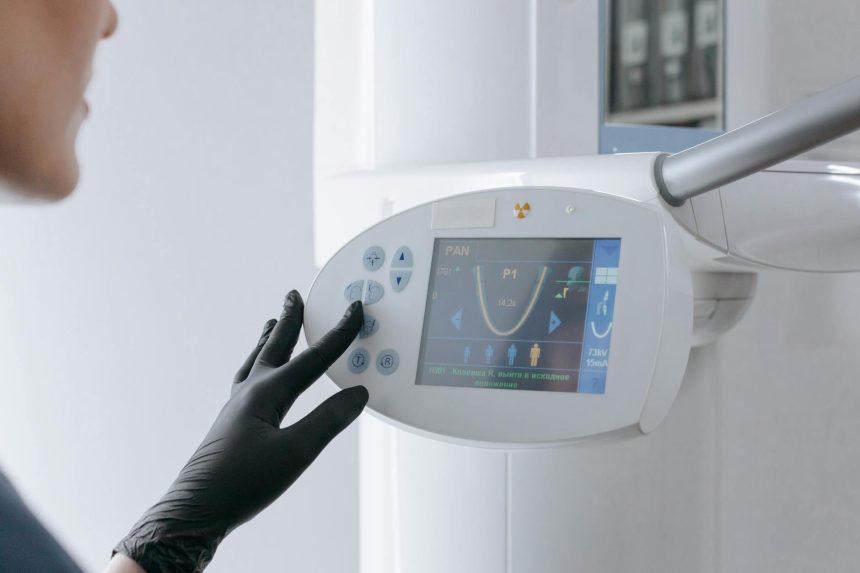explained-edge-orchestration-interface-healthcare
Explainable Edge Orchestration Interface for Healthcare Systems
The healthcare industry is rapidly embracing edge computing, a paradigm shift that brings data processing closer to its source. This move, however, introduces complexity, especially when managing and understanding distributed systems. This is where an explainable edge orchestration interface becomes not just beneficial, but essential for modern healthcare. Discover how this interface is revolutionizing how healthcare providers manage their edge infrastructure.
Unlocking the Power of Edge Computing in Healthcare
Edge computing in healthcare offers incredible potential. Imagine real-time patient monitoring, faster diagnostic imaging analysis, and more responsive robotic surgery. These applications demand low latency and high bandwidth, capabilities that edge computing delivers by processing data locally. However, the distributed nature of edge deployments can create significant operational challenges.
The Challenge of Distributed Healthcare Edge Environments
Managing a network of edge devices scattered across hospitals, clinics, and even patient homes is a daunting task. Without a clear, intuitive way to oversee these systems, healthcare organizations face risks such as:
- Difficulty in monitoring device health and performance.
- Complex troubleshooting of issues at remote locations.
- Security vulnerabilities due to lack of centralized oversight.
- Inefficient resource allocation and deployment of new services.
- Compliance and regulatory hurdles in a fragmented IT landscape.
What is an Explainable Edge Orchestration Interface?
An explainable edge orchestration interface is a sophisticated management platform designed to simplify the deployment, monitoring, and management of edge computing resources within a healthcare system. The key differentiator here is “explainable.” It goes beyond simple dashboards to provide clear, understandable insights into the “why” and “how” of edge operations.
Key Features of an Explainable Interface
For healthcare systems, the ideal interface should offer:
- Visualizations: Intuitive graphical representations of the edge network, device status, and data flow.
- Predictive Analytics: Alerts and insights into potential issues before they impact patient care.
- Root Cause Analysis Tools: Automated identification of the underlying problems when an issue arises.
- Policy Management: Simplified creation and enforcement of security and operational policies across all edge devices.
- Resource Optimization: Tools to intelligently allocate computing power and storage based on demand.
- Audit Trails: Comprehensive logging of all actions taken on the edge infrastructure for compliance and security.
Why Explainability Matters in Healthcare Edge Orchestration
In healthcare, every second counts, and the stakes are incredibly high. An explainable interface provides the transparency and control necessary to ensure patient safety and operational efficiency. Without it, healthcare IT teams might struggle to:
- Quickly diagnose and resolve performance degradations affecting critical medical devices.
- Understand why a particular edge node might be overloaded or failing.
- Verify that sensitive patient data is being processed and stored securely according to regulations.
- Effectively plan for future scaling of edge infrastructure.
This level of insight is crucial for fostering trust in edge deployments and enabling rapid, informed decision-making.
Benefits for Healthcare Providers
Implementing an explainable edge orchestration interface brings tangible advantages to healthcare organizations:
- Enhanced Patient Safety: Proactive identification and resolution of issues prevent disruptions to critical patient care systems.
- Improved Operational Efficiency: Streamlined management reduces the burden on IT staff, allowing them to focus on strategic initiatives.
- Robust Security Posture: Centralized control and clear visibility help in enforcing security policies and detecting threats.
- Cost Optimization: Efficient resource utilization and reduced downtime contribute to significant cost savings.
- Accelerated Innovation: Easier deployment and management of new edge-enabled healthcare solutions.
The Future of Healthcare Edge Management
As edge computing becomes more pervasive in healthcare, the demand for sophisticated, explainable orchestration tools will only grow. These interfaces are paving the way for a future where complex distributed systems are managed with confidence and clarity, ultimately leading to better patient outcomes and a more resilient healthcare infrastructure. For more on the principles of edge computing, consider exploring resources on edge computing from industry leaders.
Conclusion
An explainable edge orchestration interface is a critical component for any healthcare system looking to leverage the full potential of edge computing. It provides the necessary transparency, control, and insight to manage complex distributed environments effectively, ensuring patient safety, operational efficiency, and a foundation for future innovation. Embracing this technology means embracing a more intelligent and responsive healthcare future.
healthcare edge orchestration interface diagram
© 2025 thebossmind.com
Featured image provided by Pexels — photo by cottonbro studio





